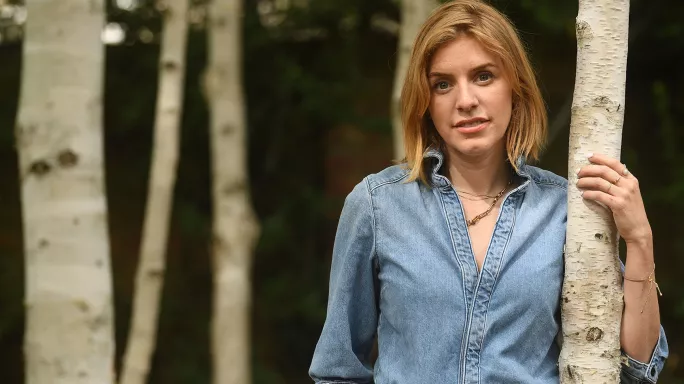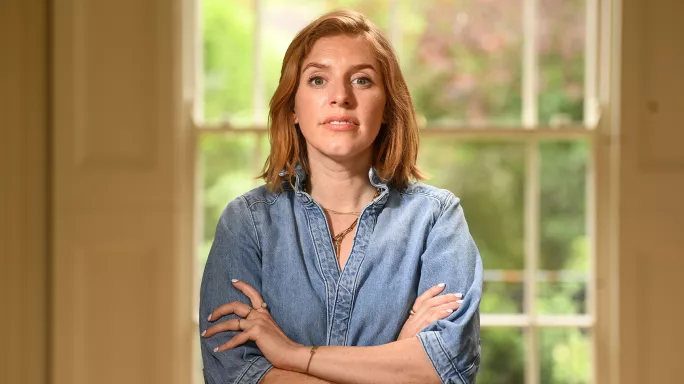- Home
- Teaching & Learning
- General
- How boys are being led to misogyny - and what to do about it
How boys are being led to misogyny - and what to do about it

While the publicity surrounding the arrest of Andrew Tate did much to raise awareness of incel culture and growing social trends promoting misogyny, most teachers were already well aware that he was only a small part of a growing problem. They had seen the videos that many of their male students were watching, witnessed the results of that in classrooms and corridors, and were already worried about what was happening to teenage boys in schools.
Dr Kaitlyn Regehr, an associate professor of digital humanities at University College London, was aware of it, too. She was the principal investigator for the Safer Scrolling report, released back in February. Its 40 pages paint a troubling picture of how online misogyny is filtering down to young men through social media platforms.
This report is an essential read for all in schools, and in producing the report - and through her wider work - Regehr has accumulated key information for teachers on how boys are being targeted with misogynistic content, how the social media companies are promoting that content and what teachers can do about it.
Tes speaks with Regehr about her findings below.
Why did you decide to look at the issue of online misogyny?
We were looking at how harm is gamified on TikTok by way of algorithms that feed content to young people, then looking at how young people consume it, internalise it and how that impacts their behaviour. Online misogyny is a case study, but we could also have looked at self-harm, body dysmorphia and so on.
Generally, social media companies aren’t actively looking to indoctrinate young people, but they are looking to hold their attention for as long as possible. So they’re looking to capture attention and use that data, but I doubt they specifically want it to turn young men into misogynists.
But machine learning believes that if you’re a young man and you like a set of specific things, you might also like some “soft” misogynistic content. So if you like A and C, the machine learning is going to offer you E. That’s the equation that it’s made and there is huge gender bias in what the machine learning believes young men want to see.

So what sort of things are young men being shown?
It’s that kind of “soft” misogyny that’s offering answers to what can feel like a really complex world and what can feel like a loss of control for men at the moment.
This kind of entry-level misogyny is quite palatable and that’s how it slowly infiltrates and works away, not being captured by the social media company monitors. If it was using really extreme hashtags, for example, that would be flagged by those monitors. Instead, it’s gamified harm that looks like entertainment, such as comedy videos about “how women think” or “the truth about female nature”. I would argue that can be even more dangerous.
More on tackling misogyny in schools
- How to respond to boys inspired by Andrew Tate
- Why tackling misogyny starts with our curriculum
- How can teachers address toxic male archetypes?
How easily can boys find themselves confronted with this content?
For our study, we interviewed young people engaging with and producing radical online content. From this, we created archetypes to represent typologies of teenage boys who may be vulnerable to becoming radicalised by online content. We then created TikTok profiles with content interests corresponding to those archetypes. We used these accounts to watch videos that TikTok suggested on its “For You” page, over a period of seven days.
After five days, the TikTok algorithm was presenting four times as many videos with misogynistic content such as objectification, sexual harassment or discrediting women (increasing from 13 per cent of recommended videos to 56 per cent).
What it tells us is that when young men linger on this content, which some will do, they will be fed more of it. The dosage of the content will become higher and higher, and then it will start offering them things like how to conform to a much more narrow view of masculinity, how to become more dominant, how to date women to make sure that they are subservient to you and so on.
What do we know about how this affects the boys who engage with it?
Through the consumption of the content - and the high, high dosages - not only does the content become more and more extreme, but it also becomes solidified for the young people in their own belief system.
As part of the study, we were able to have roundtables and interviews with school leaders and safeguarding leads to speak to them about those trends and about what they were seeing within their schools. They expressed that they had seen an increase in misogynistic language and misogynistic sentiments in the schoolyard, and then very much attributed that to social media usage.
Do we know why certain boys are particularly vulnerable to this content?
So many times when young people end up consuming harmful content online it comes back to this idea of feeling a loss of control. They’re looking for belonging, understanding and answers.
We all go to the digital space for answers and we know that TikTok is a huge source of answers for young people, whether that’s when they’re studying for their GCSEs or looking for a recipe. Plus there are some very good things that young people seek out on TikTok around creativity and connection-building, for example. Or they might be looking at science videos or using it as an educational tool.
But if you’re a young man feeling left out, feeling frustrated, feeling isolated, particularly if you’re in one of the more vulnerable groups - those who are neurodivergent or struggling with loneliness, for example - you will be given answers. In the case of online misogyny, those answers look like you are being negatively impacted by the upward mobility of women and minorities in society.
In what ways can we tackle this?
It’s something that we need to tackle as a society. It’s something that I believe is a public health crisis. We give pregnant women guidance on what is healthy consumption for their pregnancy, and we should be doing something similar for young people around the digital space. We’re not there yet, but I believe we will be.
There’s a false narrative that young people are not aware of the harms of social media, and that they don’t want to self-regulate in a healthy way.

I know of numerous young people who go on social media detoxes or who decide that they want an old-fashioned Nokia phone because they’re not able to regulate. And there are those who decide with their parents to use certain platforms that are particularly addictive for only 20 minutes a day.
Most young people want to be healthy and they’re looking for help in order to do that.
I am looking for ways to help young people navigate the space safely and to also petition social media companies and regulators to be invested in that so that we can build healthy relationships with technology.
My team and I are now in schools, speaking to young people across the country, to feed into what a healthy digital diet should look like. They’re actually using art-making practices to create digital diet guides and feeding into a report around that, which will be delivered in the autumn term.
By digital diet, do you mean screen time limits?
That’s really no longer applicable. Most homework has to be done on screens. Most young people communicate with extended family and friends by way of screens, and that surely is positive.
We’ve pushed this generation of young people on to screens and told them to socialise and educate themselves on those screens, and if you want to unpick that, you need to offer far more support offline, which is what we’re trying to do.
But we then also need to acknowledge that it’s happening and we need to give them the tools to navigate this space.
“We’ve pushed this generation of young people on to screens and if you want to unpick that, you need to offer far more support offline”
How could schools play a role in that?
My team and I are working on a mentorship approach, which takes inspiration from Education Scotland’s MVP [Mentors in Violence Prevention] programme. In the digital mentorship programme, there will be youth mentors and every year they will lead sessions on healthy digital consumption. They will also be hearing from young people about their current concerns: what apps are they on? What are the current problems of that month, that week, that day? They’re on the ground and what’s really important is that they’re embedded into the youth ecosystem.
So it’s not like parachuting someone like me in to do one assembly one time, which isn’t really that effective. It’s actually embedding this type of critical digital literacy within the holistic school environment.
And the idea of this is that the safeguarding lead and the digital lead would work together. They would work on implementing this kind of education throughout the whole curriculum so that if you’re learning about history, you’re also thinking about contemporary digital politics and it’s embedded all the way through the school environment.
For the latest research, pedagogy and practical classroom advice delivered directly to your inbox every week, sign up to our Teaching Essentials newsletter
You need a Tes subscription to read this article
Subscribe now to read this article and get other subscriber-only content:
- Unlimited access to all Tes magazine content
- Exclusive subscriber-only stories
- Award-winning email newsletters
Already a subscriber? Log in
You need a subscription to read this article
Subscribe now to read this article and get other subscriber-only content, including:
- Unlimited access to all Tes magazine content
- Exclusive subscriber-only stories
- Award-winning email newsletters
topics in this article



